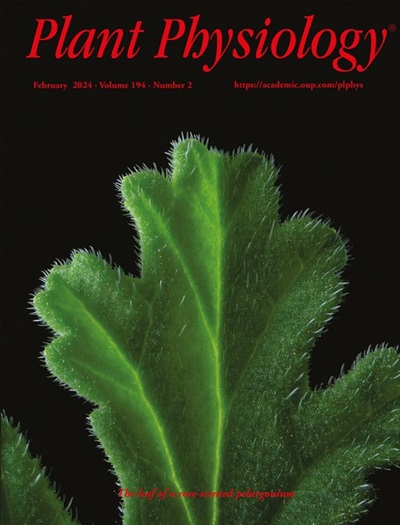缺氧植物的代谢策略
IF 6.5
1区 生物学
Q1 PLANT SCIENCES
引用次数: 0
摘要
复杂的多细胞生物是在富氧环境中进化而来的。因此,氧气是包括植物在内的所有需氧生物通过细胞呼吸产生能量所必需的。然而,植物在极端洪涝事件后会出现缺氧,在增殖器官或组织的通气条件下也会出现高耗氧量。当氧气供应受到影响时,植物会采取不同的策略来应对缺氧和有限的通气条件。不同植物物种的一个共同特征是启动厌氧发酵新陈代谢,以提供三磷酸腺苷(ATP),从而在缺氧条件下维持细胞平衡。发酵也需要许多糖底物,但这并不总是可行的,因此需要替代的代谢策略。最近的研究结果还表明,在通气条件下,缺氧代谢在植物的特定器官或组织中也很活跃。在此,我们将介绍控制植物代谢策略的调控机制,以及这些机制如何使植物在充满挑战的条件下茁壮成长。从机制上全面了解缺氧代谢的遗传和生理基础,将有助于提供机会,提高植物在当前气候变化情况下的恢复能力。本文章由计算机程序翻译,如有差异,请以英文原文为准。
Metabolic strategies in hypoxic plants
Complex multicellular organisms have evolved in an oxygen-enriched atmosphere. Oxygen is therefore essential for all aerobic organisms including plants, for energy production through cellular respiration. However, plants can experience hypoxia following extreme flooding events and also under aerated conditions in proliferative organs or tissues characterized by high oxygen consumption. When oxygen availability is compromised, plants adopt different strategies to cope with hypoxia and limited aeration. A common feature among different plant species is the activation of an anaerobic fermentative metabolism to provide adenosine triphosphate (ATP) to maintain cellular homeostasis under hypoxia. Fermentation also requires many sugar substrates, which is not always feasible, and alternative metabolic strategies are thus needed. Recent findings have also shown that the hypoxic metabolism is also active in specific organs or tissues of the plant under aerated conditions. Here, we describe the regulatory mechanisms that control the metabolic strategies of plants and how they enable them to thrive despite challenging conditions. A comprehensive mechanistic understanding of the genetic and physiological components underlying hypoxic metabolism should help to provide opportunities to improve plant resilience under the current climate change scenario.
求助全文
通过发布文献求助,成功后即可免费获取论文全文。
去求助
来源期刊

Plant Physiology
生物-植物科学
CiteScore
12.20
自引率
5.40%
发文量
535
审稿时长
2.3 months
期刊介绍:
Plant Physiology® is a distinguished and highly respected journal with a rich history dating back to its establishment in 1926. It stands as a leading international publication in the field of plant biology, covering a comprehensive range of topics from the molecular and structural aspects of plant life to systems biology and ecophysiology. Recognized as the most highly cited journal in plant sciences, Plant Physiology® is a testament to its commitment to excellence and the dissemination of groundbreaking research.
As the official publication of the American Society of Plant Biologists, Plant Physiology® upholds rigorous peer-review standards, ensuring that the scientific community receives the highest quality research. The journal releases 12 issues annually, providing a steady stream of new findings and insights to its readership.
 求助内容:
求助内容: 应助结果提醒方式:
应助结果提醒方式:


